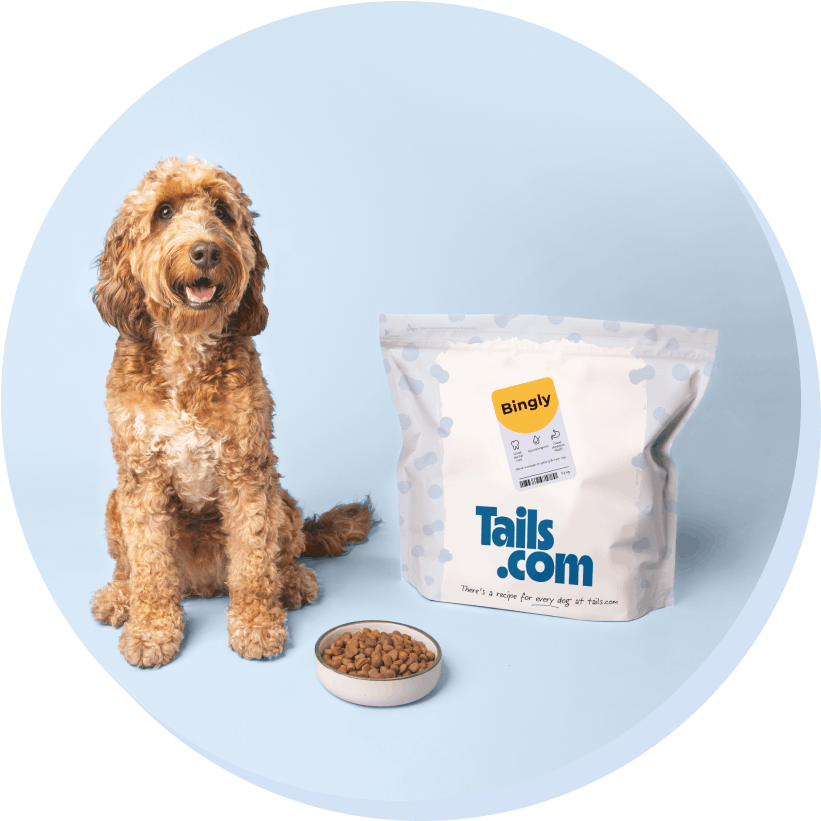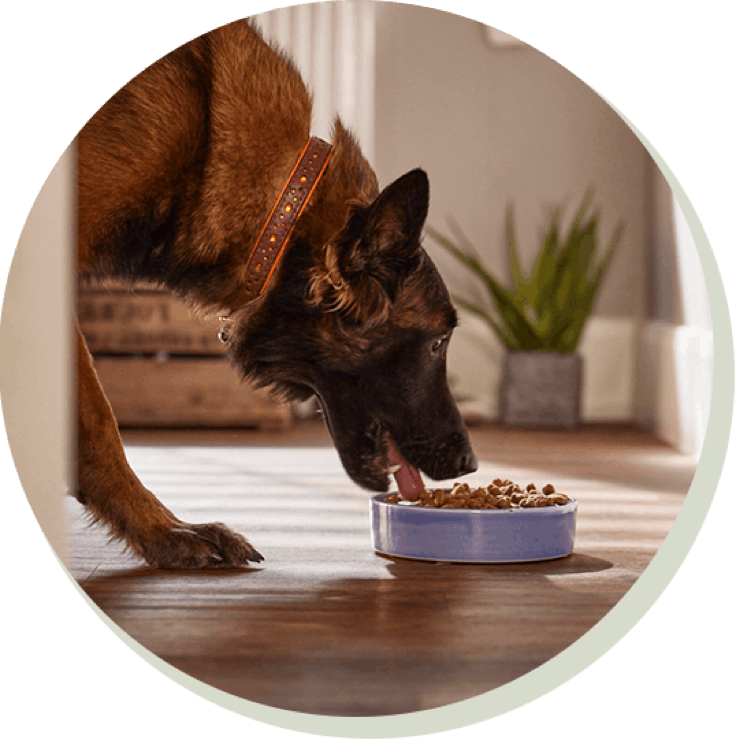Hypoallergenic Dog Food
A kibble blend tailored to their needs
Helps with food intolerances
The right sources of protein to support easy digestion

Cuts out common allergens and problem ingredients


Tell us about your dog
We’ll create a special hypoallergenic recipe just for them. Discover the benefits with 60% off your first box and 30% off your second.

Get the right nutrition
- Choose from our range of hypoallergenic kibble, wet food and treats
- Avoid certain ingredients and eliminate them from your dog's diet
- Excludes beef, eggs, dairy, soya and wheat
What's different about our hypoallergenic food?
Steer clear of the ‘big five’
The five ingredients most likely to cause an upset: beef, eggs, dairy, soya, and wheat. We can leave out any - or all - of them to suit your dog, or get them on a single animal protein, grain-free recipe kibble.

Easy to digest proteins
We use lots of fish, lamb, and chicken – sources of protein that are easy on the tummy and great for sensitive digestion.

Hydrolysed proteins
We use hydrolysed salmon protein, which splits the protein strands into smaller ones so they’re less likely to trigger an immune response.

*Your dog’s tailored kibble blend is created in a factory that handles a wide range of kibbles, so there may be trace amounts of other ingredients present.
FAQs
Generally, hypoallergenic dog food tends to exclude common allergens like beef, wheat or dairy. When you see "hypoallergenic" on dog food, it tends to mean that the recipe doesn’t contain some of these ingredients, so it’s less likely to trigger an allergic reaction. However, it's worth knowing there's no single legal definition for this term, so every dog food brand has their own interpretation of what a hypoallergenic recipe is. Unless you suspect your dog has food allergies, a hypoallergenic diet isn't typically necessary. The good news is, at Tails.com, we offer both standard and hypoallergenic food options, so we can tailor a diet that's just right for your dog, even if they need to avoid one or more common allergens.
If your vet or nutritionist has recommended a hypoallergenic diet for an exclusion diet trial, it's important to follow their advice on how long to use it – usually around six weeks. If your dog thrives on a hypoallergenic diet or simply loves the taste, you can safely continue feeding it to them long-term.
Yes, dogs can be allergic to hypoallergenic food. Here's why: these special diets are designed to exclude only the most common canine allergens. However, your dog might have an allergy to a less common ingredient that's still present in the hypoallergenic formula.
Hypoallergenic dog food typically means a recipe that excludes common allergens like beef, wheat or dairy. These diets often still contain grains, often using gluten-free grains such as rice or maize, which are much less likely to trigger an allergic reaction. Grain-free diets do exactly what their name suggests: the recipes will contain no grains. Instead, they usually rely on ingredients like potato or sweet potato as their primary carbohydrate source.
Hypoallergenic food is carefully crafted to exclude ingredients that frequently trigger allergies in dogs, like beef, wheat or dairy. Gastrointestinal dog food is designed with digestion in mind. These formulas are highly digestible, often using easily processed ingredients, a thoughtful balance of fibres and beneficial additions like prebiotics to support a healthy gut.
Anallergenic isn't a type of food; it's actually a specific brand designed for severe food sensitivities. What makes it special is its use of hydrolysed proteins. Think of hydrolysed proteins as being broken down into such tiny pieces that your dog's immune system doesn't even recognise them as protein. This prevents an allergic reaction from flaring up. Hypoallergenic diets are a bit different. While they're also for sensitive pups, they usually work by simply excluding common allergens from the recipe, rather than breaking down proteins to a molecular level.
Sign up now to get 60% off your first box + 30% off your second